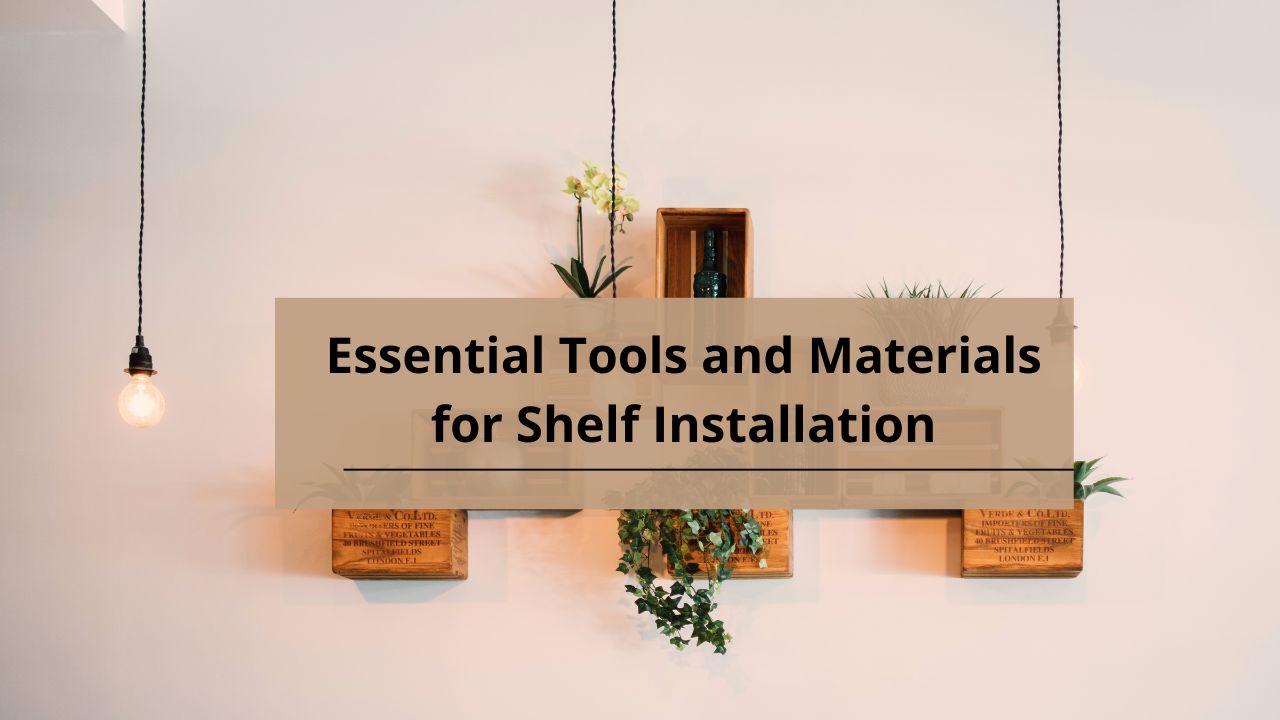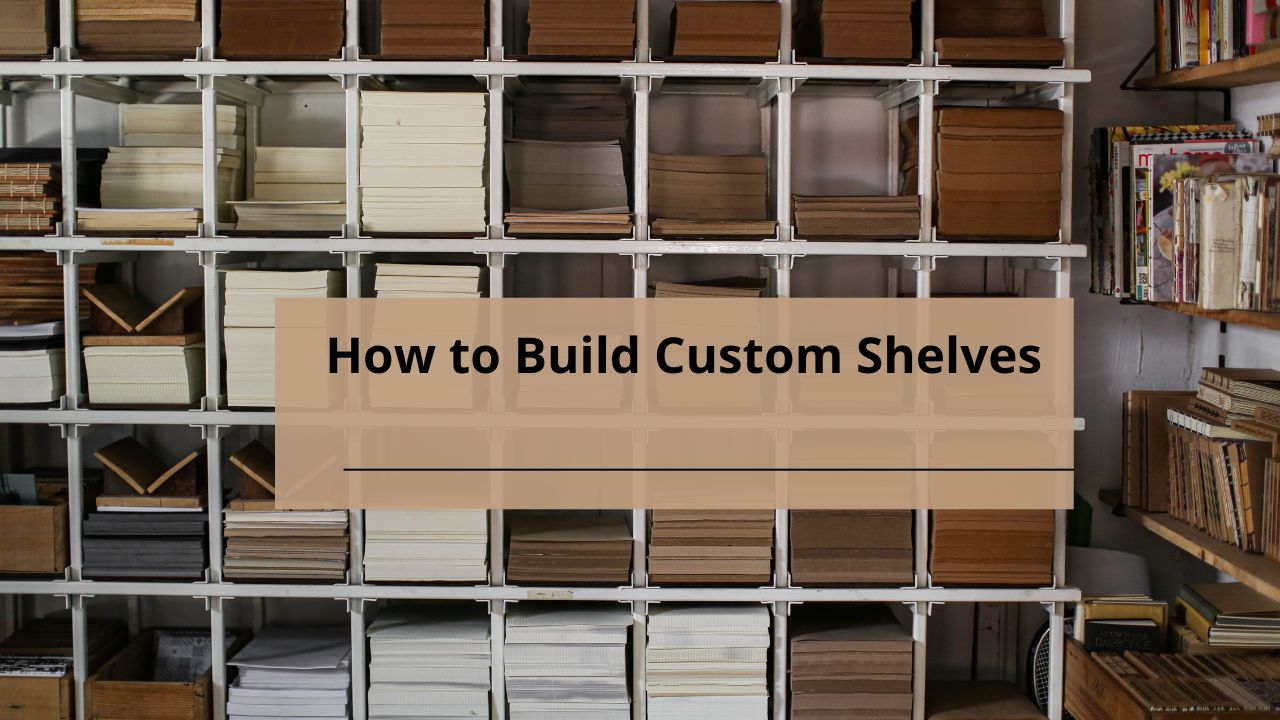Proper installation of shelves requires more than just the shelves themselves. Having the right tools and materials is crucial to ensuring a successful and secure setup. Whether you’re installing floating shelves in your living room or sturdy brackets in your garage, this guide will help you understand what you need for a smooth and efficient installation process.
Basic Tools for Shelf Installation
Measuring Tape
A measuring tape is essential for precise measurements.
- Importance and Usage: Accurate measurements are crucial for ensuring that your shelves are installed at the right height and in the correct position. Use a measuring tape to mark the placement of brackets and to ensure that the shelves are evenly spaced.
Level
A level helps you achieve a perfectly horizontal installation.
- Ensuring Accurate Installation: Use a level to check that your shelves are straight. This tool helps avoid the frustration of crooked shelves and ensures a professional finish.
Drill
A drill is used for making holes in the wall to insert screws and anchors.
- Selecting the Right Drill and Bits: Choose a drill that suits the type of wall you’re working with (e.g., drywall, concrete). Make sure to use the appropriate drill bits for the size of the holes you need.
Screwdriver
A screwdriver is necessary for tightening screws.
- Types and Their Uses: Use a Phillips or flathead screwdriver depending on the type of screws used in your installation. Ensure you have the correct size to avoid stripping the screws.
Hammer
A hammer is used for driving nails and can assist in minor adjustments.
- When and How to Use It: Use a hammer for inserting nails into the wall, if applicable, and for any adjustments during the installation process.
Specialized Tools and Equipment
Stud Finder
A stud finder helps locate the wooden studs behind your wall.
- How to Locate Wall Studs: Use a stud finder to ensure that your shelves are anchored into the studs for maximum stability. This is especially important for heavier shelves or items.
Wall Anchors
Wall anchors provide extra support for screws in drywall.
- Types and Applications: Use plastic anchors for light items and toggle bolts or molly bolts for heavier loads. Anchors help distribute the weight and prevent screws from pulling out.
Brackets and Supports
Brackets and supports are crucial for holding the shelves in place.
- Choosing the Right Type: Select brackets based on the type of shelves and the weight they need to support. Floating shelves require hidden brackets, while wall-mounted shelves use visible supports.
Screws and Nails
Screws and nails are used to secure the brackets and shelves.
- Selecting the Correct Size and Type: Use screws that match the type of wall anchors and brackets you’re using. Ensure they are long enough to provide a secure hold without causing damage to the wall.
Materials Needed
Shelves
Choose shelves that fit your space and purpose.
- Types and Sizes: Shelves come in various materials and sizes. Select those that match your room’s decor and can support the items you plan to place on them.
Mounting Hardware
Mounting hardware includes screws, anchors, and brackets.
- Screws, Anchors, and Brackets: Ensure you have all the necessary hardware for your type of shelves and wall. This hardware is essential for a secure installation.
Tools for Wall Preparation
Prepare the wall surface before installing shelves.
- Sandpaper and Putty: Use sandpaper to smooth any rough patches and putty to fill in any holes or imperfections. A clean, smooth surface ensures better adhesion and a more professional finish.
Cleaning Supplies
Clean up after installation to maintain a neat appearance.
- For Post-Installation Cleanup: Have cleaning supplies like a damp cloth or a vacuum handy to remove any dust or debris created during the installation process.
Preparation Steps
Planning the Shelf Layout
Careful planning ensures that your shelves will fit and look great.
- Measuring and Marking: Measure the space where you want to install the shelves and mark the locations for brackets and anchors. Double-check measurements to avoid mistakes.
Pre-Installation Checklist
Make sure you have everything you need before you begin.
- Ensuring All Tools and Materials Are Ready: Verify that you have all the tools and materials listed above. Having everything ready will make the installation process smoother and more efficient.
Installation Process
Step-by-Step Guide
Follow these steps for a successful shelf installation.
- Measuring and Marking: Measure and mark the wall where the shelves will be installed. Use a level to ensure your marks are straight.
- Drilling and Anchoring: Drill holes at your marked locations and insert wall anchors if necessary.
- Attaching Brackets and Shelves: Attach the brackets to the wall using screws. Place the shelves on the brackets and ensure they are secure.
Tips for a Smooth Installation
Avoiding Common Pitfalls
Avoid issues that can disrupt your installation.
- Misalignment and Weight Distribution: Check for alignment and distribute weight evenly to prevent shelves from sagging or falling. Make adjustments as needed.
Ensuring Longevity
Proper maintenance will keep your shelves in good condition.
- Proper Maintenance and Adjustments: Regularly check the stability of your shelves and make any necessary adjustments to ensure they remain secure and functional.
Conclusion
Installing shelves requires careful planning and the right tools and materials. By using the proper tools, preparing adequately, and following a systematic installation process, you can ensure a successful and durable shelving setup. Whether for decorative purposes or practical storage, the right shelves can significantly enhance your space.
FAQs
1. What are the essential tools for shelf installation?
Essential tools include a measuring tape, level, drill, screwdriver, and hammer. Specialized tools like a stud finder and wall anchors may also be needed.
2. How do I choose the right wall anchors for my shelves?
Choose wall anchors based on the type of wall and the weight of the items you’ll place on the shelves. Plastic anchors work for light items, while toggle bolts or molly bolts are better for heavier loads.
3. Can I install shelves without a stud finder?
While a stud finder is useful, you can also locate studs using alternative methods like tapping on the wall or using a magnet to find screws in the studs.
4. What should I do if my shelves are uneven?
Check the level and alignment of the shelves. Adjust the brackets or anchors as needed to ensure the shelves are straight and secure.
5. How do I maintain my shelves after installation?
Regularly check for stability and make adjustments if necessary. Clean the shelves as needed and ensure they are not overloaded


